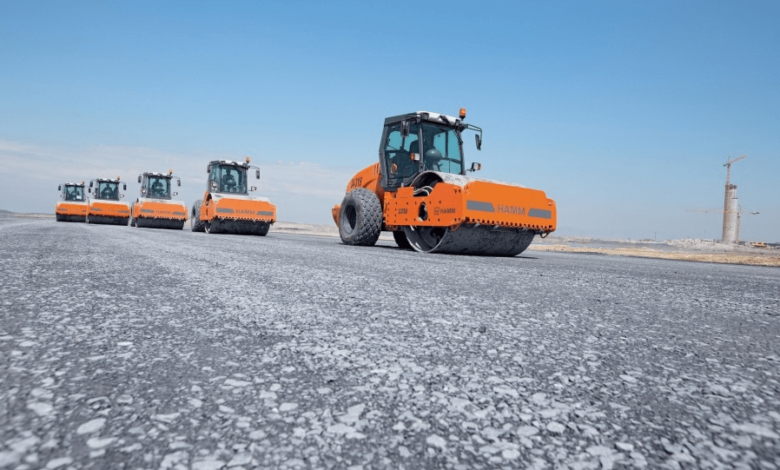Base de la Carretera: Foundation of a Strong Road

When we travel over smooth, efficient roads, we rarely stop to think about what lies beneath the pavement. The hidden layers under a road are just as vital as the surface itself. Among these layers, the base de la carretera—or road base—is one of the most important components. It serves as the structural foundation that supports traffic loads and contributes to the overall durability of the road.
This article explores the definition, function, construction process, materials, and long-term impact of the base de la carretera. Understanding this essential element helps explain how roadways maintain strength and integrity under constant stress.
What Is the Base de la Carretera?
The term base de la carretera refers to the layer of material that lies between the subgrade (natural ground or improved soil) and the pavement surface. This base layer provides the necessary support for the top pavement and distributes the weight of vehicles to the ground beneath.
Without a properly built base, even a well-paved surface will soon crack, rut, or collapse. That’s why this hidden layer is a key aspect of road design and construction.
Purpose of the Road Base
The base de la carretera performs several essential functions:
- Load Distribution: It spreads the weight of vehicles across a larger area, reducing stress on the subgrade.
- Drainage: A good base allows water to drain quickly, preventing moisture from weakening the soil below.
- Support for Pavement: It offers a stable platform on which the asphalt or concrete layer can be laid.
- Frost Protection: In colder climates, it acts as a buffer to reduce frost heaving, which can damage roadways.
The better the base layer is constructed, the longer the road will last with minimal maintenance.
Structure of a Roadway
To appreciate the role of the base, let’s look at a simplified structure of a typical carretera (road):
- Pavement (Surface Layer) – Asphalt or concrete layer that vehicles drive on.
- Base de la Carretera (Base Layer) – Compacted layer of crushed stones or other granular material.
- Subbase (Optional) – An additional layer below the base, especially for heavy-duty roads.
- Subgrade – The existing soil that must be leveled and compacted.
Each of these layers works together, but the base layer is particularly crucial for withstanding traffic loads and ensuring longevity.
See also: Choosing The Right SIP Trunk Provider For Your Business
Types of Base Materials
The materials used for the base de la carretera depend on local availability, road type, and expected traffic volume. Common materials include:
Crushed Stone
Crushed stone is one of the most widely used materials for road bases. It offers high strength and excellent drainage. Different sizes of aggregate are mixed and compacted for optimum performance.
Gravel
In rural or less-developed regions, gravel is often used due to its affordability and ease of installation. However, it may not provide the same durability as crushed stone.
Construction Process
Building the base de la carretera involves several precise steps:
1. Preparation
The subgrade must first be leveled, compacted, and, if necessary, stabilized. Drainage features are also installed during this phase.
2. Layering
Base material is spread over the subgrade using specialized equipment. The layer’s thickness depends on the design but typically ranges from 4 to 12 inches (10 to 30 cm).
Quality Control
To ensure long-term performance, strict quality checks are conducted during base construction. These include:
- Density Testing: To ensure adequate compaction.
- Gradation Testing: To verify the right mix of particle sizes.
- Moisture Content Testing: To achieve the right balance for compaction.
If any of these criteria are not met, the base may fail prematurely, leading to costly repairs.
Environmental Considerations
Modern road construction is becoming more environmentally conscious. Sustainable practices in building the base de la carretera include:
- Using Local Materials: Reduces transportation emissions.
- Recycling Old Pavement: Saves resources and reduces landfill waste.
- Permeable Bases: Improves stormwater management.
Some regions also incorporate geotextiles or geomallas between layers to reduce erosion and enhance strength, further improving the environmental profile of the road.
Maintenance and Rehabilitation
While a well-built base can last decades, certain factors may necessitate repairs:
- Water Infiltration: Poor drainage can soften the base.
- Heavy Loads: Excessive truck traffic may compress or shift the layer.
- Climate Changes: Freeze-thaw cycles can weaken even a solid base.
In such cases, engineers may mill off the surface, strengthen the base with additional material, or even reconstruct the entire layer.
Innovations in Base Layer Technology
New technologies are transforming how the base de la carretera is constructed:
Geogrid Reinforcement
Plastic or composite grids are laid in the base to increase load distribution and reduce material usage. These geogrids also improve the lifespan of the road.
Smart Sensors
In experimental setups, sensors embedded in the base monitor stress, moisture, and temperature in real time, helping engineers detect early signs of failure.
Importance of the Base in Road Performance
Every motorist benefits from a properly constructed base de la carretera whether they realize it or not. The base:
- Reduces surface cracking
- Minimizes pothole formation
- Lowers long-term maintenance costs
- Enhances driving comfort and safety
A road is only as strong as the foundation beneath it. That’s why governments, civil engineers, and construction firms place such importance on getting this layer right.
Conclusion
Though often overlooked by the average road user, the base de la carretera is the most critical layer in road construction. It supports the pavement, distributes traffic loads, manages water flow, and resists environmental damage.
Modern technologies, materials, and sustainable practices are making base construction more efficient and environmentally friendly. As urbanization increases and road networks expand, investing in strong and intelligent base layers is essential for building infrastructure that lasts.
Understanding and appreciating the hidden strength of a well-built base can help societies prioritize smarter, safer, and more sustainable roads for the future.





